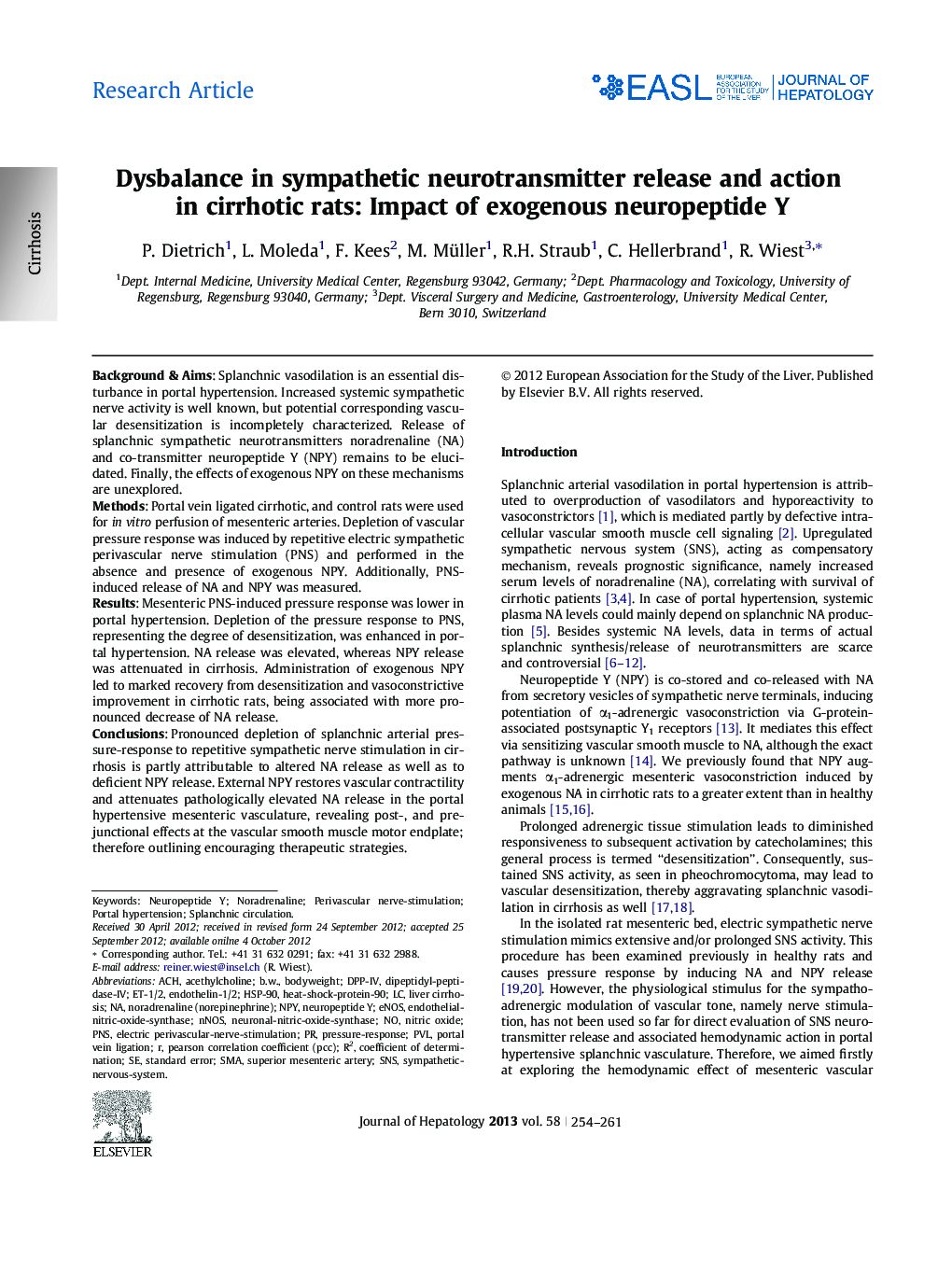| Article ID | Journal | Published Year | Pages | File Type |
|---|---|---|---|---|
| 6104928 | Journal of Hepatology | 2013 | 8 Pages |
Background & AimsSplanchnic vasodilation is an essential disturbance in portal hypertension. Increased systemic sympathetic nerve activity is well known, but potential corresponding vascular desensitization is incompletely characterized. Release of splanchnic sympathetic neurotransmitters noradrenaline (NA) and co-transmitter neuropeptide Y (NPY) remains to be elucidated. Finally, the effects of exogenous NPY on these mechanisms are unexplored.MethodsPortal vein ligated cirrhotic, and control rats were used for in vitro perfusion of mesenteric arteries. Depletion of vascular pressure response was induced by repetitive electric sympathetic perivascular nerve stimulation (PNS) and performed in the absence and presence of exogenous NPY. Additionally, PNS-induced release of NA and NPY was measured.ResultsMesenteric PNS-induced pressure response was lower in portal hypertension. Depletion of the pressure response to PNS, representing the degree of desensitization, was enhanced in portal hypertension. NA release was elevated, whereas NPY release was attenuated in cirrhosis. Administration of exogenous NPY led to marked recovery from desensitization and vasoconstrictive improvement in cirrhotic rats, being associated with more pronounced decrease of NA release.ConclusionsPronounced depletion of splanchnic arterial pressure-response to repetitive sympathetic nerve stimulation in cirrhosis is partly attributable to altered NA release as well as to deficient NPY release. External NPY restores vascular contractility and attenuates pathologically elevated NA release in the portal hypertensive mesenteric vasculature, revealing post-, and prejunctional effects at the vascular smooth muscle motor endplate; therefore outlining encouraging therapeutic strategies.
